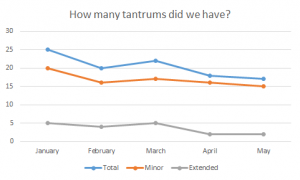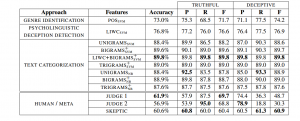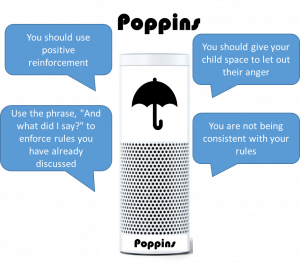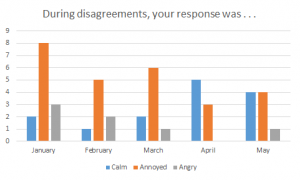Poppins, the smart baby monitor that predicts why your baby is crying, is here to help guide new parents through the labyrinth of raising a child. We are requesting $200,000 to develop the initial prototype and fund a study to prove the effectiveness of the device on raising healthy children and assuaging parental fears.
Millenials worried about parenting
There’s nothing more important to people in this world than their babies. A Pew Research study found, about half (52%) of Millennials say being a good parent is one of the most important things to them compared to 42% of Gen-Xers at a comparable age.
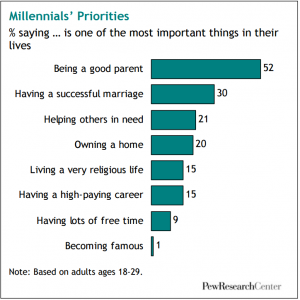
Yet, children don’t come with an instruction manual. And, as every new parent learns, it can be a terrifying job—with the feedback erring on the negative side: your child will scream and cry for hours. On average, newborns cry for about two hours each day. Between birth and about 6 weeks of age, this typically increases to almost three hours each day! How do we help parents, in real-time, know what to do when their baby cries? Even further, how do we limit the many frustrations and anxieties that stem from being unsure about what to do? Existing baby monitor technology fails to provide an intelligent guidance solution for why your baby is crying. They can only alert you, show you images of your child, and provide biometric information. What if we could do more with data to provide real-time recommendations for parents in their time of need? The baby monitor market is expected to grow between 8.5 – 11% over the next 5-7 years and reach $1.4 billion over that time. This growth is primarily driven by changing habits in households with two employed parents who want to stay remotely connected to their baby combined with increased awareness of baby safety issues and online retailing. Innovation in this space has led to a generation of high-priced, smart baby monitors with features such as infrared night light, in-built lullabies, and temperature sensors. Our solution goes beyond monitoring and into predicting the right action to help your child. Introducing Poppins, an intelligent parenting assistant that helps parents determine the best course of action when their baby cries.
Poppins is here to guide new parents
Faster than you can say “Supercalifragilisticexpialidocious” Poppins is here to help you be your best parent. Worried about waking up to the sound of your child crying and not knowing what to do? Does that specific cry mean it’s hungry, lonely, or even in danger? Using a prediction model built with childcare experts and your child’s past behavior, Poppins will use the pitch of the cry, the time of night, the baby’s age, motion sensor technology, and other inputs to predict a range of reasons for the crying, as well as recommend steps to help get your child back to sleep. Based on research and expert commentary, Table 1 catalogues prevalent factors that may drive your baby to tears.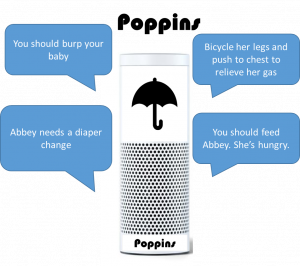
It also includes critical variables and measurements that can inform prediction and what a recommendation may look like. With additional data over time, we hope to deepen the public’s understanding of factors that result in upset babies and vastly improve the prediction process, which will initially be trained on research. Rather than waking up in a panic, wake up with a plan and know which spoonful of sugar will help your baby go down. In addition to translating your baby’s language, Poppins can track their sleeping patterns to predict what bedtime ritual works to help them sleep through the night. Poppins is a baby monitor that does more than just monitor the problem.
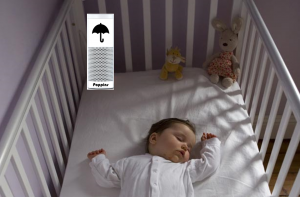
Growing up with Poppins
As your child grows, rather then flying away on an umbrella, Poppins features expand to keep up with your child. Poppins will chart your child’s word development, so you can see its first words, how its word complexity develops, and what curse words it is picking up. It can also compare your child’s development to national averages, and recommend steps to improve your baby’s language skills. When it comes to discipline, Poppins can try to predict why your child may be acting out, as well as ensuring you are consistent so the child is learning from its behavior, and ensuring you don’t use no too much so when you do, “No” really means something. Poppins can help you raise your child in the most delightful
Poppins “Freemium”Model
We plan to monetize Poppins through two channels. First, we will earn revenue and profit off of sales of the Poppins Smart Baby Monitor Unit. In order to optimize for network effects and improve the performance of our recommendation engine with more data, wide adoption is critical. Accordingly, the unit price of $49.99 will be at the very low-end of the spectrum for smart baby monitors, which retail at up to $2507. This purchase will come with access to a free Basic subscription to the Poppins application for iPhone and Android. Consumers will be able to use the monitor to see and hear their infant, and have access to their own historical data on metrics like number of times the baby woke up per night, the duration of crying, and a score of how restless they were. However, in order to access more advanced features, consumers will have the option to purchase a monthly Premium prescription of $9.99. The Premium version of the product will perform the in depth analysis of the infant’s crying patterns, tonality, movements, and more, and provide recommendations based on our advanced algorithm. Given that the Poppins algorithm will improve the more customers and the more data we have to train, exhibiting strong network effects, we believe this “freemium” model is ideal. We will create a huge amount of value by learning from the large base of Basic Poppins subscribers, and monetize that value by selling advanced features to those who value them the most while still collecting data and improving our engine through non-premium subscribers.
Poppins cares about privacy
We will guarantee our customers that Poppins will never utilize ads, and that we will never sell their data to outside parties. Though this monetization stream could potentially be lucrative, we think that it is not worth privacy concerns and loss of customer trust. Given the highly sensitive nature of the product, which deals with small children, privacy is a huge potential concern. By providing an upfront No Advertisement guarantee, we believe that we can help assuage those concerns. Also, generally speaking, baby monitors are already accepted listening devices within homes showing that parents are willing to sacrifice a little privacy for the sake of their child’s safety and comfort.
Poppins Pilot
A convincing Poppins pilot will demonstrate value across two critical dimensions. First, how does our solution impact outcomes for the baby? Second, to what extent do parents feel better equipped to provide appropriate and effective care. We propose a large study (~100 babies and their parents) where one half is treated as a control group and the other half uses a fully functional Poppins Baby Monitor. The control group will also be given the Poppins Baby Monitor but without a working recommendation engine, mimicking the functionality of a standard baby monitor found in the market. After a period of 2 months, we expect to generate a scorecard of critical results – an example can be found in Table 2 below. These results will partially be populated by data collected from the Poppins instruments and partially populated by participating parents on their experiences. We expect to drive positive outcomes as it relates to feelings of anxiety, preparedness, and confidence engaging in child care.
Table 1 – Core Diagnoses, Data Collection, and Recommendations
| Reasons Your Baby Is Crying | Predictors | Solution |
| Hunger | Lip-smacking, sucking on hands, time since last meal | Feed the baby |
| Temperature | Ambient temperature | Add or remove clothing
Move the blanket Change the temperature |
| Nappy change | Last meal, last diaper change | Change the diaper |
| Stomach problem, burping, gassy | Wriggling, arching back, pumping legs or recently sucked pacifier, hiccupped, cried | Bicycle legs and push to chest to relieve gas |
| Teething | Age (4 months old), excess drool, gnawing on objects | Pacifier
Massage gums |
| More stimulation | Time since last interaction | Automatically plays lullaby |
| Less stimulation | Unfamiliar surroundings, ambient noise, ambient light | One-on-one interaction with a trusted loved one |
| Just need to cry | Love, physical comfort Swaddle
It’s okay to let your baby cry |
Table 2 – Pilot Scorecard
| Pilot Scorecard | Control Group | Poppins |
| Populated by Poppins data collection | ||
| How often did your baby cry? | xxx | xxx |
| How much time did your baby spend crying? | xxx | xxx – 10% (target) |
| On average, how long did a parent spend with their crying child | xxx | xxx – 10% (target) |
| Survey populated by parent participants
As a parent, rate the following based on how well they describe your experience from 1-10 |
||
| When my baby cries, I feel confused and stressed | xxx | xxx – 10% (target) |
| When my baby cries, I do not know how to respond | xxx | xxx – 25% (target) |
| When my baby cries, I feel like my actions address their needs | xxx | xxx + 25% (target) |
| When my baby cries, I feel like only my partner is equipped to provide care | xxx | xxx – 50% (target) |
Sources:
1 http://www.pewresearch.org/fact-tank/2010/03/24/parenting-a-priority/
2 https://www.babycenter.com/404_why-does-my-baby-cry-so-much_9942.bc
3 http://www.researchandmarkets.com/reports/3641386/world-baby-monitor-market-opportunities- and
4 http://www.reportsnreports.com/reports/857411-global-baby-monitors-market-2017-2021.html
5 https://www.alliedmarketresearch.com/baby-monitor-market
6 https://www.babycentre.co.uk/a536698/seven-reasons-babies-cry-and-how-to-soothe-them
7 https://www.safety.com/blog/best-smart-nursery-products-and-baby-monitors/
